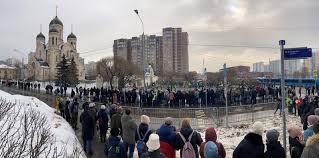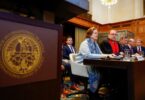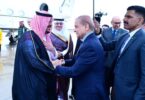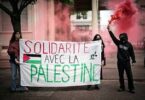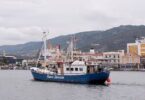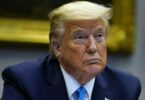MOSCOW (AFP): Hundreds of mourners gathered near a church in southern Moscow on Friday, braving the prospect of arrests to pay their respects to late Russian opposition leader Alexei Navalny.
The ceremony comes two weeks after Navalny died in an Arctic prison. His supporters accuse Russian President Vladimir Putin of murdering his top critic.
The Kremlin, which has denied involvement in Navalny’s death, on Friday warned against “unauthorized” protests around the funeral.
Under grey skies, hundreds of mourners still queued near the Mother of God Quench My Sorrows church in Maryino, where the service is scheduled to start at 2:00 p.m. (1100 GMT).
“People like him shouldn’t be dying: honest and principled, willing to sacrifice themselves,” said Anna Stepanova, who came to pay homage.
The French and German ambassadors were also in the crowd.
Fences had been put up around the church, but the passage was left open despite a heavy law enforcement presence and anti-riot police trucks.
“What are they afraid of? Why so many cars?” Stepanova said.
“They are so afraid themselves,” she said. “The people who came here, they are not scared. Alexei wasn’t either.”
The opposition leader’s team said the coffin was on its way to the church, where it will be displayed in an open casket in line with Orthodox practices.
Two hours later, the burial is set to take place at the Borisovo cemetery, a short walk from the banks of the Moskva River.
“Any unauthorized gatherings will be in violation of the law and those who participate in them will be held responsible,” Kremlin spokesman Dmitry Peskov said according to TASS.
Some 400 mourners have been detained at memorials for Navalny since his death, rights organization OVD-Info has said.
The dissident’s widow, Yulia Navalnaya, earlier said she feared the funeral could be disrupted by further arrests.
“I’m not sure yet whether it will be peaceful or whether the police will arrest those who have come to say goodbye to my husband,” Navalnaya told the European Parliament this week.
She has directly blamed Putin for his death.
Western governments have been quick to hold the Kremlin responsible but have stopped short of making direct accusations of involvement.
Putin’s spokesman, Dmitry Peskov, has criticized the accusations made by her and some Western leaders as “vulgar.”
Navalny had shot to prominence through his anti-corruption campaigning, exposing what he said was rampant graft at the top of Putin’s administration.
He was arrested in January 2021 when he returned to Russia after being treated in Germany for a poisoning attack.
“Alexei was tortured for three years,” Navalnaya told lawmakers in Brussels.
“He was starved in a tiny stone cell, cut off from the outside world and denied visits, phone calls, and then even letters.”
“And then they killed him. Even after that, they abused his body,” she said.
His body was held in a morgue for eight days before being returned to the family, which Navalny’s team believed to be a bid to cover up responsibility for his death.
His family and his team have also accused authorities of trying to prevent a dignified public burial, fearing it could turn into a flashpoint for dissent.
Navalny’s team said local investigators had threatened to bury him on the prison grounds if his mother did not agree to a “secret” funeral.
Once the body was released, allies struggled to find a place that would agree to hold a funeral ceremony, as well as hearse drivers.
And a civil ceremony allowing the general public to pay their respects to the body — common in Russia — has not been allowed.
Navalnaya has vowed to continue his life’s work and urged to “fight more desperately, more fiercely than before.”
In the crowd near the church, some seemed to agree.
“A person has died, but his idea will live on thanks to those who have gathered here,” said Alyona, a 22-year-old archaeologist who came to pay her respects.

